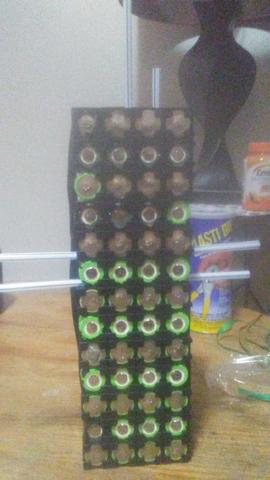I had seen that youtube, I think they use vacuum for the epoxy and grin is pneumatic pressure? I will look at their site to see what they did.i don't have those tools, I noticed in some marine below water line epoxy repairs they add micro-balloons to the epoxy so it will flow.
heres the sticker shock, 850ml of polyester resin is $25, a gallon $80. the last time I bought resin I was paying $110 for 5 gallons so I don't know what epoxy will be. 500ml plasti dip $25 plus tax and env fee will be $30.
the local building supply is going out of business so everything was 40-60 percent off. 850ml resin (3m brand) was $16 so I bought 2, extra 11ml hardner $4.50 and 8 sqft of fiberglass matt so after taxes, environment fee and discount was $32. I can probably do 3 batteries with that. the worker told me where to go for cheap Plasti-dip, $15 in cloverdale, he brings it in from the states. hopefully he has liquid tape but that will be a tomorrow trip.
amberwolf, yes I agree the resin will probably crack and that will be game over im going to see what micro balloons are and maybe add to resin.
I believe in letting things breathe so its very tempting to just plasti dip the battery ends, wrap it in fiberglass and have a drain hole, I think of a 26650 cell, holds hot or cold too long. now im building a solid brick so that's why I was thinking tinfoil. I forgot to pick up some galvanised metal strapping, something like 2 pieces of 2 or 3 inch wide by 24 inch long.
come to think of it I might just do a solid plasti dip battery with 18 gauge copper or smaller gauge wire( I think cat5 cable is thin gauge solid copper wire) to act as cooling rods instead of the polyester resin and tin foil, waterproof, flexible and will shed the heat from inside the battery. then I just strap the battery so I have 2 mounting points at the end, wrap it in fiberglass and be done



